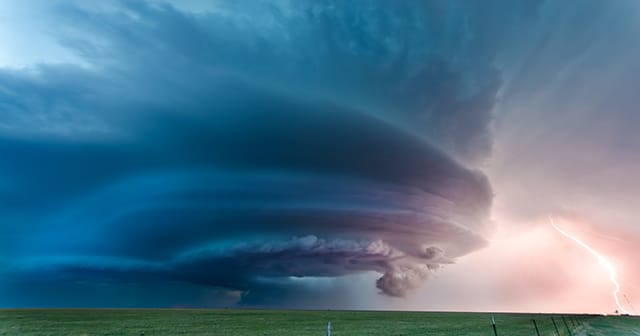Just about every type of weather happened somewhere in the US over the past weekend. Heavy rains, tornadoes, blizzards, flooding, and even a typhoon near Guam caused, and continue to cause automobile accidents, flooded land, destroyed homes, and three fatalities. At 520 PM CST, a confirmed large and extremely dangerous #tornado was located over Columbus, moving
Tag: RadarScope
Have You Ever Experienced Thundersleet?
On February 5, some lucky people along the Iowa and Illinois border were treated to an unusual winter phenomenon. As an ice storm moved in, not only were they getting sleet, but they also were observing lightning. This type of weather is known as thundersleet. Our view out of the office this evening. It's not
Overnight Hailstorm in Dallas Causes Damage to Homes and Businesses
Many in the Dallas area were awakened in the middle of the night by hail up to the size of baseballs. Severe storms moved through the area after midnight. Damage to roofs and vehicles is being reported across the metro, and roofing companies and windshield repair shops will soon be bustling. RadarScope, with hail contours
A Look at Alberto and the Data Behind the Science
While many may think of WDT as the parent company of WeatherOps forecasts or RadarScope, we are much more than that. We also work with all types of weather data using GIS, APIs, and more. Let’s take a look at the variety of images we can produce using data from the recent Tropical Storm Alberto.
There Are Three Types of Supercells. Can You Name Them?

When thunderstorms develop in a strongly sheared environment, they can begin to spin. If the primary updraft of a storm is rotating, it is known as a supercell. Within this class of thunderstorm, there are three main categories. Let’s observe these supercells using RadarScope data. The most common type of supercell is a classic supercell.
Outflow Boundaries and Gust Fronts
We have all experienced a gust front, or outflow boundary, before. It is a process associated with thunderstorms and can cause winds strong enough to cause damage. While tied to thunderstorms, the gust front gets to you before the storm does. Gust fronts and outflow boundaries are the same thing. Similar to a cold front,
How Do Sea Breezes Work?
As summer approaches, you may notice when you go to the beach you experience a nice, cool breeze blowing inland during the afternoon. This is known as a sea breeze, but do you know what causes them to form? If you look up the definition of a sea breeze, you are told it is a
Dry Line Magic
Have you heard of the dry line before? If you live in the Texas Panhandle or Oklahoma, this is nothing new to you. Every spring, the dry line is talked about on severe weather days. So, what is it exactly and how does it relate to thunderstorm development? The textbook definition of the dry line
Earthquakes, Birds and Weather Radar
On September 3, 2016, a 5.8 magnitude earthquake occurred near Pawnee, Oklahoma at about 7:02 a.m. That morning, I was viewing Doppler weather radar data in my RadarScope® app and saw a rapid increase in the size of the radar echoes near the radar and also the intensity of those echoes, but when I looked
A Brief History of Weather Radar
During World War II, radar systems were utilized to help guide various missions and track aircraft. However, at times, radar operators noticed some extraneous echoes showing up on their display. After investigating, it was discovered that the echoes operators were seeing on their display weren’t aircraft or anything related to missions, but rather interference from










 Comprehensive weather insights help safeguard your operations and drive confident decisions to make everyday mining operations as safe and efficient as possible.
Comprehensive weather insights help safeguard your operations and drive confident decisions to make everyday mining operations as safe and efficient as possible.